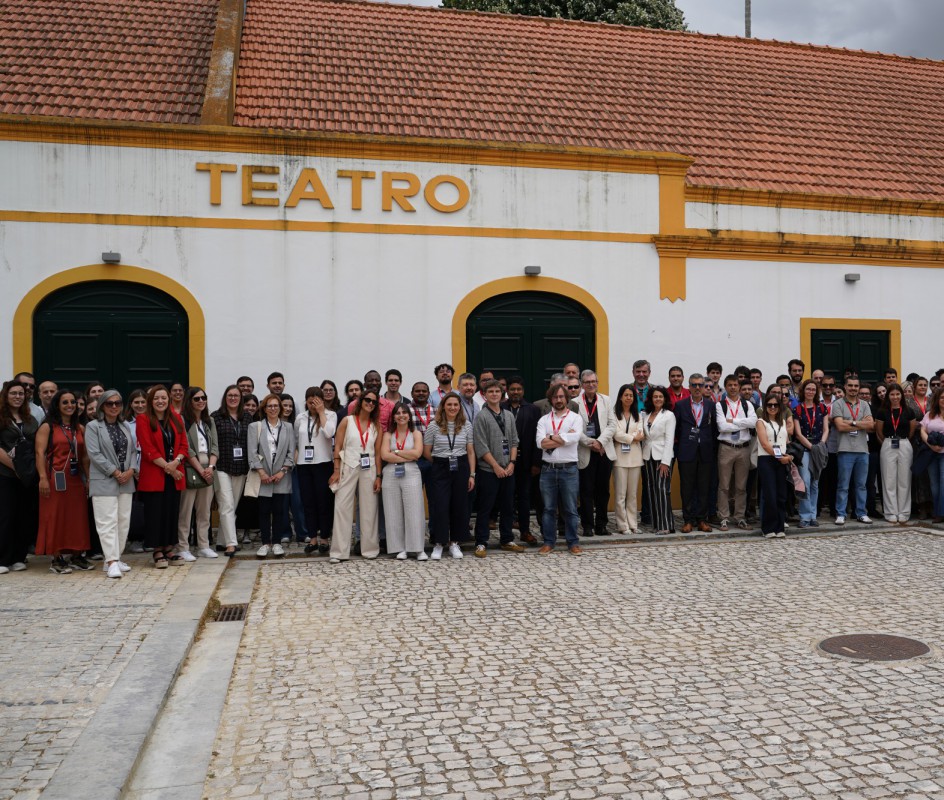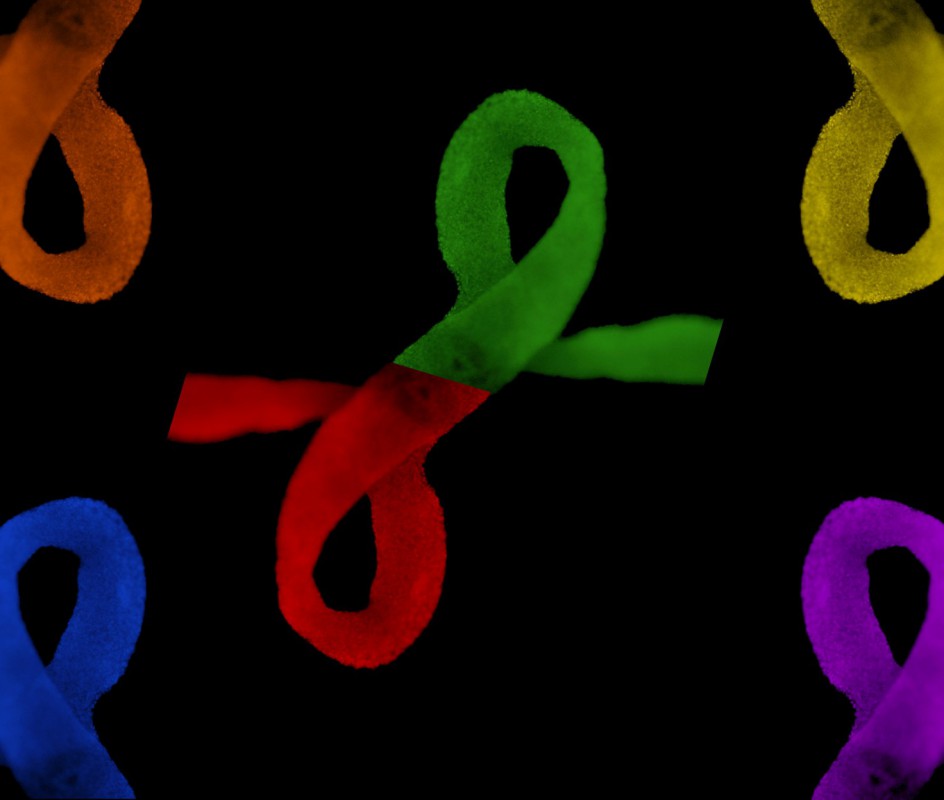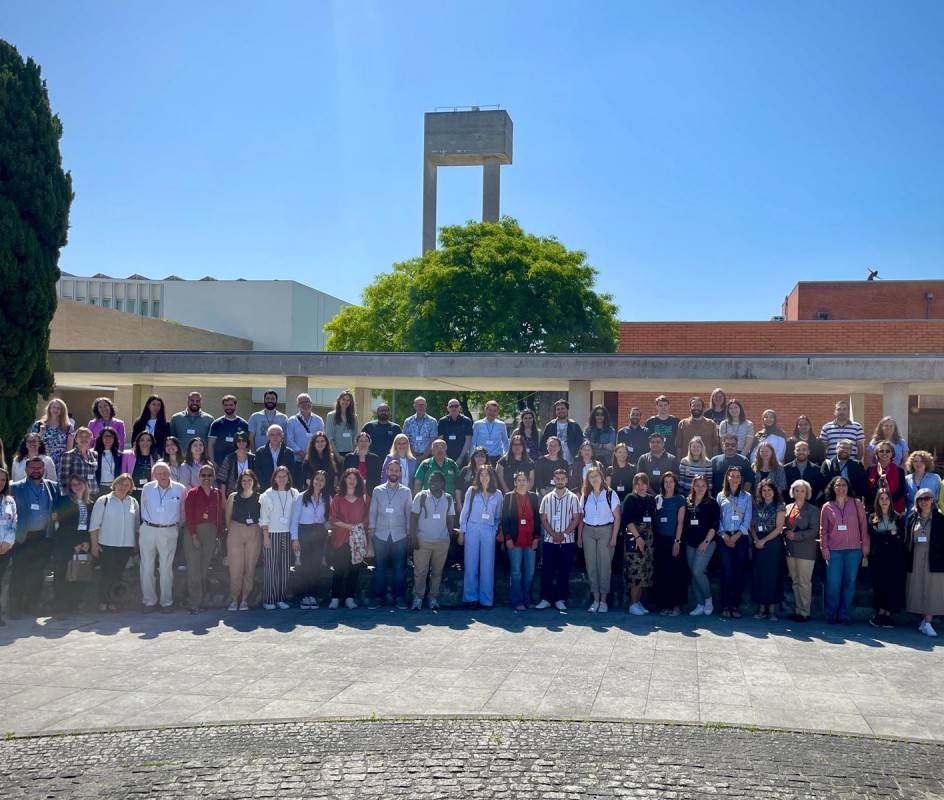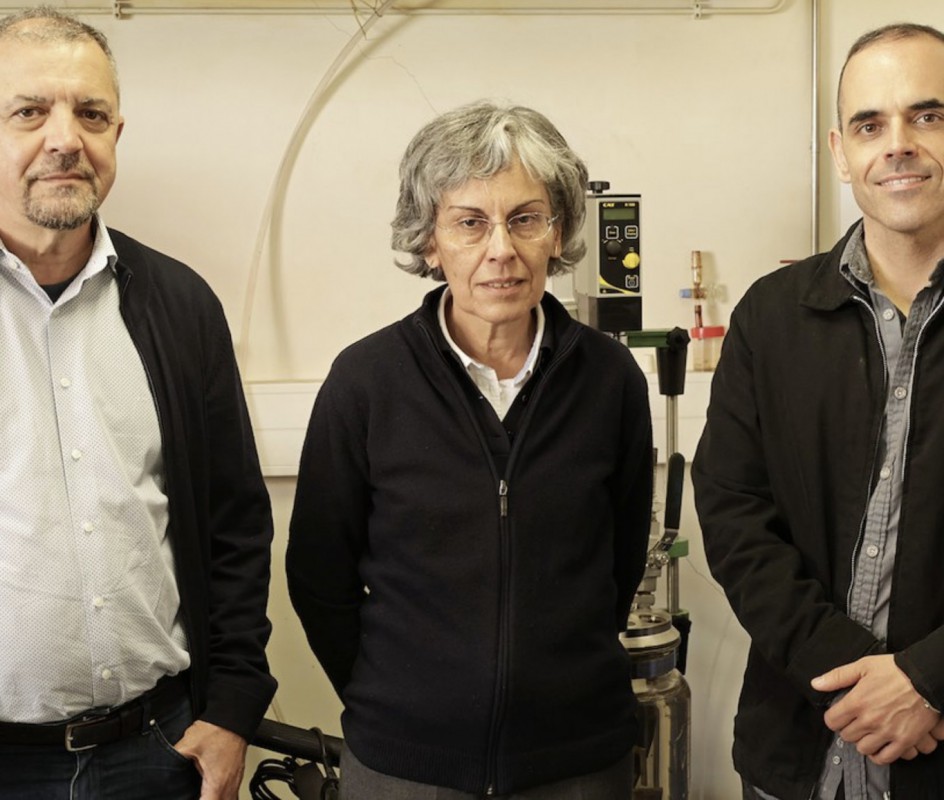
Research developed by Professors Luís Carlos and Carlos Brites has achieved international prominence by starring on the cover of the most recent issue of the renowned scientific journal Journal of the American Chemical Society. The study represents an innovative milestone in the measurement of temperatures on a nanometric scale under conditions of extremely high magnetic fields.
In collaboration with scientists from the University of Montpellier and the National Laboratory for Intense Magnetic Fields in Toulouse, France, and the Wroclaw University of Science and Technology in Poland, the UAveiro team has made a discovery that could redefine this area of science.
Revolution in temperature measurement in extreme conditions
Using luminescence thermometry, a method that measures temperatures remotely through the light emitted by certain materials, the team developed a molecular thermometer based on lanthanide ions (terbium and europium). When these ions are excited by ultraviolet light, they emit luminescence that varies according to temperature, allowing for precise measurements. Luminescence thermometry has applications in areas such as thermal imaging, medical diagnostics, photothermal therapies and monitoring in nanoelectronics.
However, as Luís Carlos explains, "until now, it was assumed that luminescent thermometers were not affected by intense magnetic fields. This work was the first to test that hypothesis and reveal that it's not true."
Extreme magnetic fields and new frontiers in science
The molecular thermometer was subjected to magnetic fields of up to 58 Teslas - around 1 million times more intense than the Earth's magnetic field. The researchers found that above certain values, traditional temperature detection methods fail, contrary to the current view in scientific literature.
The team proposed a new thermometric parameter capable of measuring temperatures accurately, even under intense magnetic fields of up to 20 teslas. The measurements cover a temperature range between -250 and 30 degrees Celsius, setting a new standard of reliability and opening up avenues for applications in extreme conditions.
Potential impact on high-tech areas
"Our work changes the way we understand how molecular thermometers work in extreme conditions," says Carlos Brites. "The results have fundamental implications for the development of technologies that rely on thermal measurements in environments with high magnetic fields."
Luís Carlos points out that by identifying specific emissions from terbium and europium ions that are less sensitive to magnetic fields, the study opens up possibilities for remote and precise thermal measurements in extreme environments, which could have an impact on several high-tech areas, including:
-
Biomedicine, such as nuclear magnetic resonance (1.5 to 9 T).
-
Quantum computing, in information coding systems (up to 3 T).
-
Particle physics, in accelerators such as the LHC (Large Hadron Collider) (8-16 T).
-
Nuclear fusion, in tokamak reactors (above 10 T).
-
Transportation, such as magnetic levitation (Maglev) trains (over 3 T).
-
Space exploration, in magnetic propulsion (above 3 T).
"This breakthrough could transform several industries and drive the development of new technologies where thermal control in adverse conditions is essential," concludes Luís Carlos.
The article can be read at: https://pubs.acs.org/doi/full/10.1021/jacs.4c11584
The cover of the Journal of the American Chemical Society with UAveiro's work can be seen at: https://pubs.acs.org/toc/jacsat/146/49
Related Articles
We use cookies for marketing activities and to offer you a better experience. By clicking “Accept Cookies” you agree with our cookie policy. Read about how we use cookies by clicking "Privacy and Cookie Policy".












